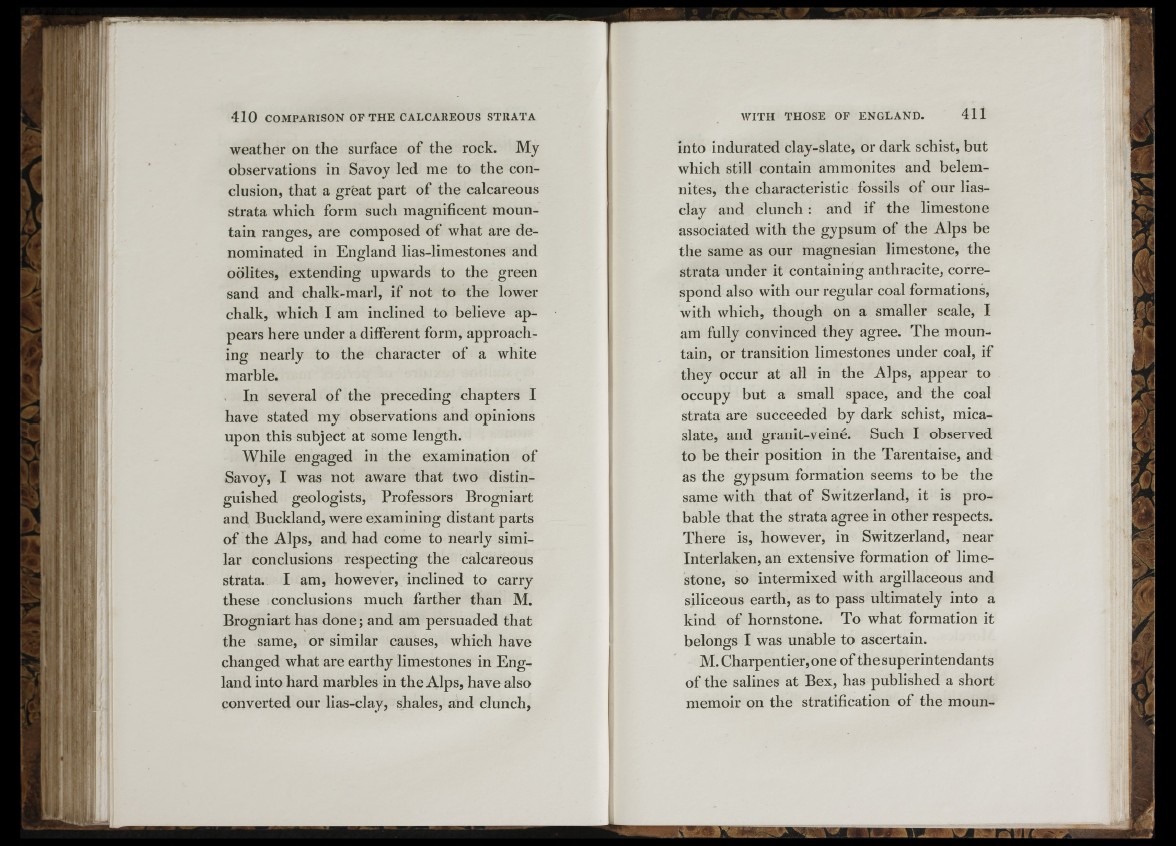
I k
410 COMPARISON OF THE CALCAREOUS STRATA
weather on the surface of the rock. My
observations in Savoy led me to the conclusion,
that a great part of the calcareous
strata which form such magnificent mountain
ranges, are composed of what are denominated
in England lias-limestones and
oolites, extending upwards to the green
sand and chalk-marl, if not to the lower
chalk, which 1 am inclined to believe appears
here under a different form, approaching
nearly to the character of a white
marble.
In several of the preceding chapters 1
have stated my observations and opinions
upon this subject at some length.
While engaged in the examination of
Savoy, I was not aware that two distinguished
geologists. Professors Brogniart
and Buckland, were examining distant parts
of the Alps, and had come to nearly similar
conclusions respecting the calcareous
strata. I am, however, inclined to carry
these conclusions much farther than M.
Brogniart has done; and am persuaded that
the same, or similar causes, which have
changed what are earthy limestones in England
into hard marbles in the Alps, have also
converted our lias-clay, shales, and chinch.
WITH THOSE OF ENGLAND. 411
into indurated clay-slate, or dark schist, but
which still contain ammonites and belemnites,
th e characteristic fossils of onr lias-
clay and clunch : and if the limestone
associated with the gypsum of the Alps be
the same as our magnesian limestone, the
strata under it containing anthracite, correspond
also with our regular coal formations,
with which, though on a smaller scale, I
am fully convinced they agree. The mountain,
or transition limestones under coal, if
they occur at all in the Alps, appear to
occupy but a small space, and the coal
strata are succeeded by dark schist, mica-
slate, and granit-veiné. Such I observed
to be their position in the Tarentaise, and
as the gypsum formation seems to be the
same with that of Switzerland, it is probable
that the strata agree in other respects.
There is, however, in Switzerland, near
Interlaken, an extensive formation of limestone,
so intermixed with argillaceous and
siliceous earth, as to pass ultimately into a
kind of hornstone. To what formation it
belongs I was unable to ascertain.
M. Charpentier, one of the superintendants
of the salines at Bex, has published a short
memoir on the stratification of the moun